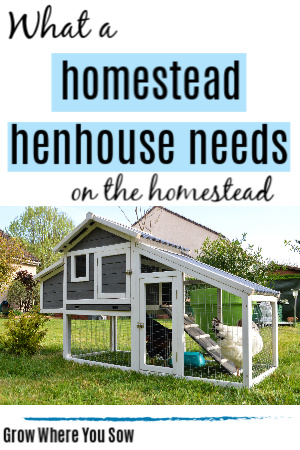What a henhouse needs
You’ll always have to find what works best for your land, but some things are great to know starting out. Here are the things you have to have in a henhouse, and then some that are just nice to have.
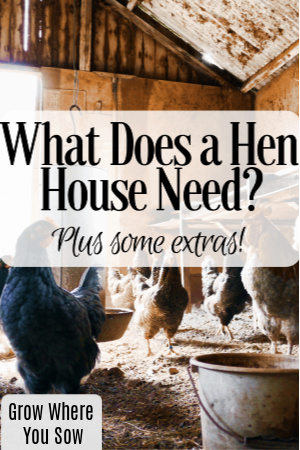
Table of contents
6 things a henhouse needs along with some extra “nice to haves”.
I didn’t have to build our henhouse because it was there when we bought our house.
Our henhouse is a curved “A-Frame” shape and after having this style, I would prefer a boxier style simply because it would be easier to modify and provide more space to manipulate. I’m all about the spacial relations.
All henhouses needs shelter and roosts
Make sure your chickens have a clean, dry space to go to get out of the elements. There’s been a fair amount of rain here lately and, although they sometimes love playing in it, it’s nice to know I have a great space for my chickens to go if they need/want.
Inside the house, I’ve added more roosting space. Although they have more than enough roosting space, for some reason, they prefer to all roost at the top bar. I suspect that if I kick the roosting area out a bit more so it isn’t as steep, they may disperse.
Until then, I’ve added some more roosting spots on the other side. Here’s the main roosting area.
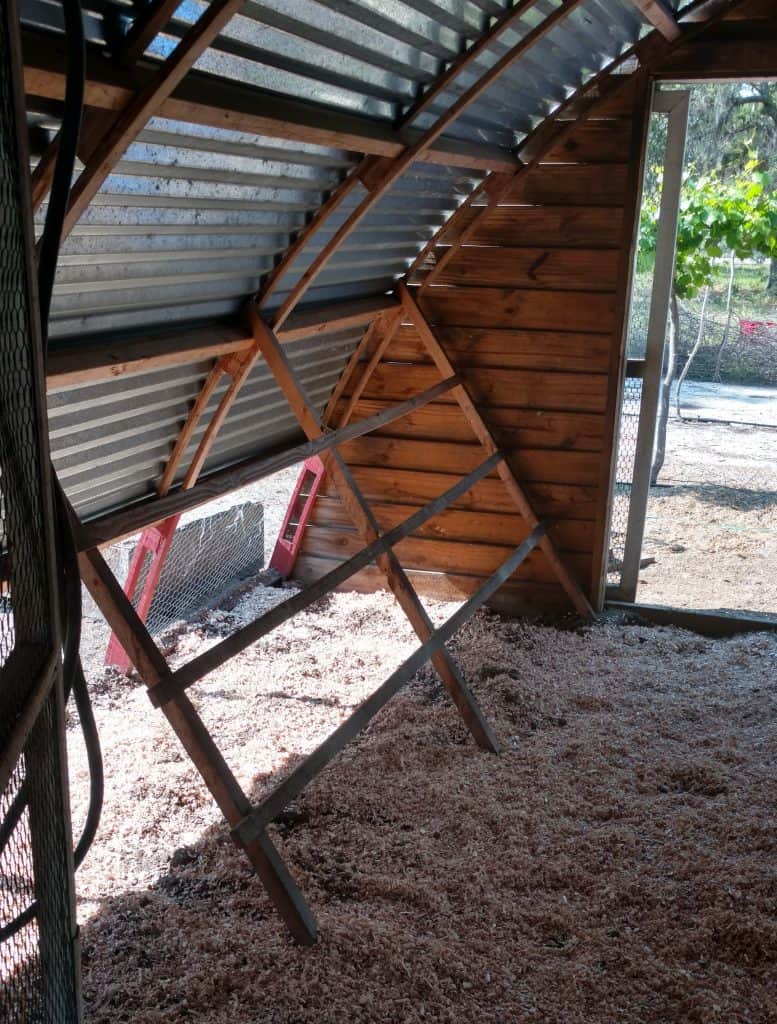
Nesting boxes
You want to aim for a 1:4 ratio. One box to every four hens. If you already own chickens you know often they just choose a couple of boxes and lay every egg they can in it!
I have 8 nesting boxes and about 20 hens. I rarely have eggs in more than 4 different boxes, and it’s often 3 boxes. Here’s my nesting area. Off to the right, you can see the small roosting spot I added:
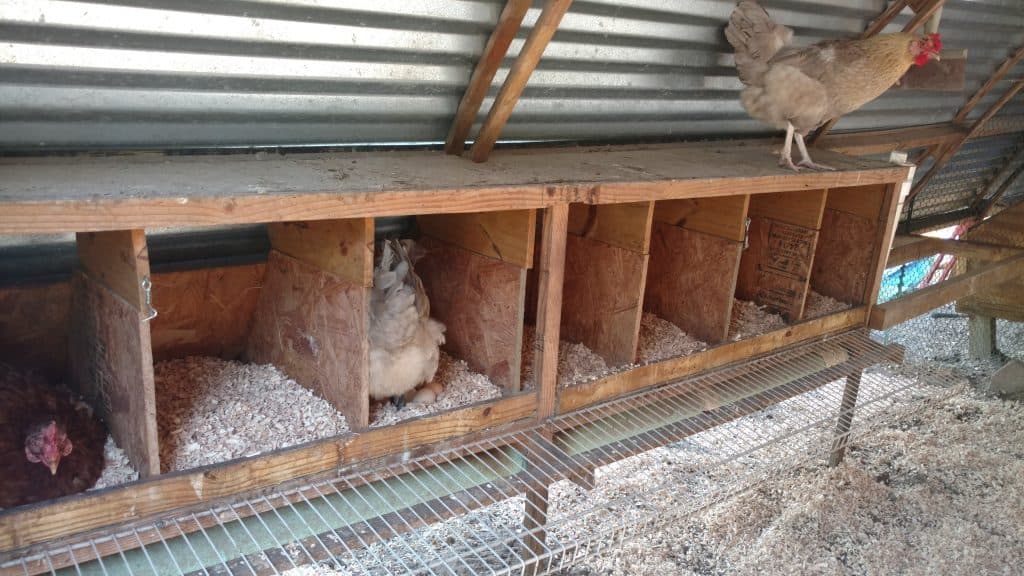
The white grids in front of the boxes are to keep the ladies out at night, compliments of the previous owner. I do this for two reasons: One, it’s healthy for your chickens to roost and two my chickens will sleep and poop in their boxes.
I got tired of scooping poop every morning and wasting bedding. I use pine bedding in their boxes now because it’s the only material they don’t immediately scratch to the ground. Straw is hopeless in my henhouse.
Water and food
Hanging waterers are probably the best Pinterest project I’ve done to date. The biggest pro to hanging your waterers is that it’s much more difficult for your chickens to kick dirt into them. The con to hanging waterers is it’s easier to slosh the water out.
This is easy to get around by just making sure the waters aren’t able to swing as much. We also have nipple waterers under the nesting boxes and I plan to add more of them eventually. I used to use metal pans for their feed. Due to constant rusting from Florida humidity and fermented feed, I switched to large plastic feed pans and PVC troughs.
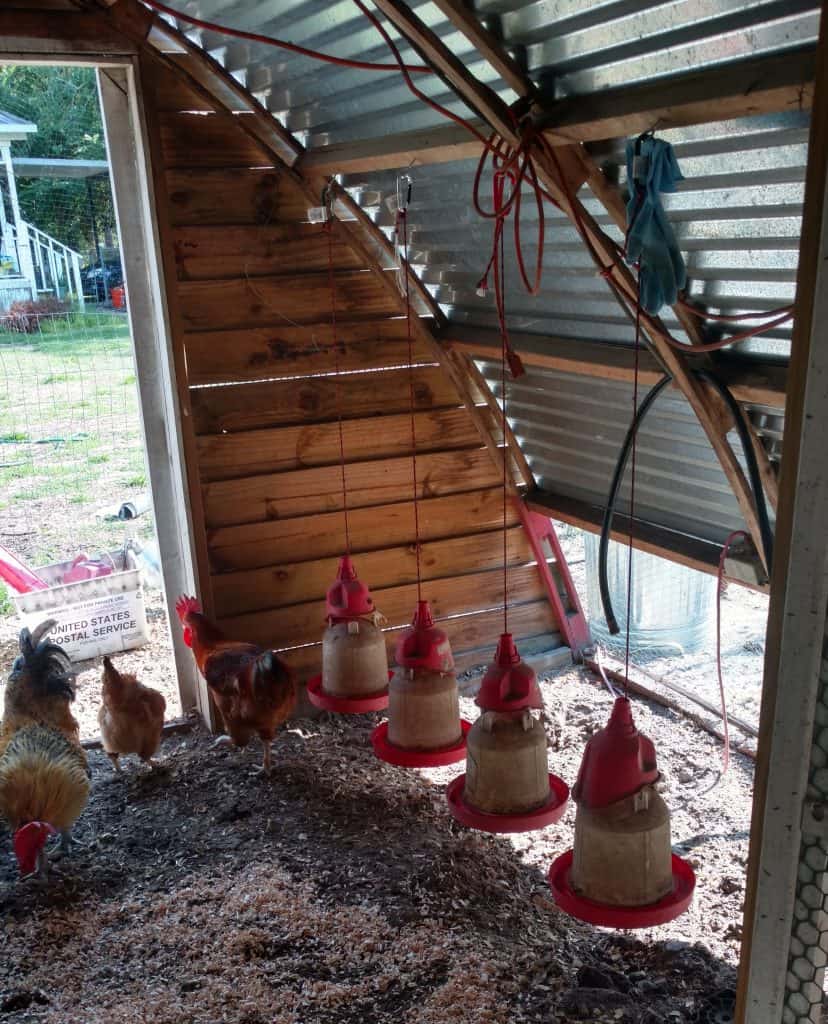
Flooring and bedding
Since we didn’t build our henhouse we didn’t get to choose the floor and ours is dirt. Luckily, we don’t have problems with predators digging in. If you live in an area where predators are a problem, you’ll want a sturdier floor.
Wood and concrete are both acceptable flooring options because you’ll be putting bedding on top of it. Even though the base of our henhouse is dirt, I still add bedding for a few reasons.
- I used to use hay and straw and now I strictly use pine shavings, as I do in their nesting boxes. The pine shavings suck all the moisture up and also smell wonderful. I immediately noticed a difference when I switched to pine.
- Three words: Deep litter compost. You can practice deep litter composting with any type of floor and here’s a really great article on how. It’s especially good for you folks that have heavy winters.
You want to stay away from sawdust, cedar, oak, and black walnut because they can be dangerous. If you live in an area where predators are a threat, make sure your floor isn’t penetrable. You can also lay wire below the surface on the outside of the coop/run.
The extras and add-ons
There are a few aspects of our current henhouse that I do love, and suggest.
- There’s a door at each end of the henhouse which aids in wonderful air circulation. The doors also keep it nice and cool on hot Florida days.
- We also have multiple power outlets. This is nice because we can plug in a heat lamp to raise our chicks in the hen house.
- We have fluorescent ceiling lights down the middle of the ceiling equipped with a light switch.
- There are two water lines in the house and the third right outside one of the doors. The third water source has a little concrete square beneath it. It’s one of those little things in life that I just love.
- The middle door that closes is so nice. Eventually, that’ll be the room our teenage chicks are raised in order to easily integrate them into the flock. We currently move them to a separate small henhouse. This area could also potentially be used as a sort of “quarantine” spot.
Summary
I’ll be adding a few dust bathing boxes this summer, too, along with the nipple water systems. Some folks add drop pans with sand below their roosts for easy clean-up.
We have a dirt floor and great air circulation, so it isn’t crucial for me to scoop poop every week. I’ve even seen some people add chicken swings!
As long as you have the “must-haves” above, you’re good to go! If you’re looking for a good DIY chicken project, including dust box ideas, check out my Homestead Chickens board on Pinterest!
